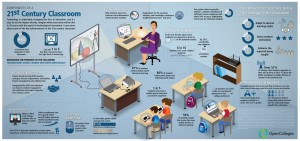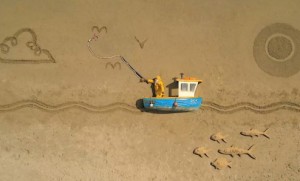The most obvious challenge to leveraging technology is acquiring it.

That is no small feat in a struggling economy where education is suffering from devastating budget cuts. However, districts across North Carolina have begun to address that challenge in the face of accountability measures moving to online venues. My district has only 2,200 students total but has formed a partnership with Apple and completed one full year of one-to-one throughout the complete K-12 grade span.
http://farm4.static.flickr.com/3014/3022886382_c44dc2a44e_b.jpg
But the second challenge is providing programs, applications, and internet access. And that is an onion with so many layers! First we pull off the outer papery coating of the onion — the base programs that will be provided for consistency throughout the district. Then, a tech savvy teacher shares a program that will change our instruction as we know it and the layer peeled back makes our eyes smart! The same process is involved in the implementation of applications: district roll out, teacher/student feedback, a virtual bevy of incredible resources, and we’re really twitching! Before we know it, we have a pile of peels, our eyes can barely stay open and that darn onion hardly looks any smaller! That’s because the core issue is so big — providing internet access to all the shareholders that has enough bandwidth and enough speed to truly maximize the programs, applications, and actual tool that is being leveraged.
We experienced accessibility issues ourselves at NCCAT, and I’m sure that is not the first (or thelast!) time any of us have ever had to deal with it! It’s the most recent and memorable because we all wanted so much to use what we were learning about! It’s frustrating — absolutely — but it’s a good problem to have. At this point in our technological renaissance, it’s one of the key issues driving innovation in technology. Meanwhile, we have to help our students, and ourselves, learn to overcome and work through the frustrations. Maybe it would make a good Problem-Based lesson!

Which brings me to the final challenge that I’ve faced in leveraging the blessing of technology in my classroom — the students themselves. Like all of the mentioned issues facing anyone who tries to harness technological advances for supporting education, this one will evolve over time, too. We will learn a balance between when to use and what to use in the current technological offerings. Perhaps more importantly, though, we will learn better how to keep students on task while they are using it!
My current response to the last area of challenges in my classroom is to provide engaging material that encourages students to stay on task. Conversely, I instruct them to take notes (and I teach specifically what that means) on paper when doing research and then typing the research in paper form on their computer to make revisions easier. I have rearranged my desks in such a way that I can see what they are all working on from the back of the room. I set expectations that after they have time to work on an assignment, they will be sharing their work. All these things have added up to a sense of accountability for my students and a stronger sense of my role as facilitator in the learning process.
Leveraging technology for the classroom really is a multi-layered issue. What challenges have you faced that I haven’t addressed or alluded to here?
 I’ve had the hardest time answering this prompt. My learning curve has been steep at times this summer and I’ve been given so much important information. I’ve accessed and experimented with resources that I was unaware of and tried to adjust my comfortable “tried and true’s” to bring in engaging and relevant new applications. The more I work through what has been shared, the more I truly absorb. But…what can I share about that “flipped switch” moment?
I’ve had the hardest time answering this prompt. My learning curve has been steep at times this summer and I’ve been given so much important information. I’ve accessed and experimented with resources that I was unaware of and tried to adjust my comfortable “tried and true’s” to bring in engaging and relevant new applications. The more I work through what has been shared, the more I truly absorb. But…what can I share about that “flipped switch” moment?







